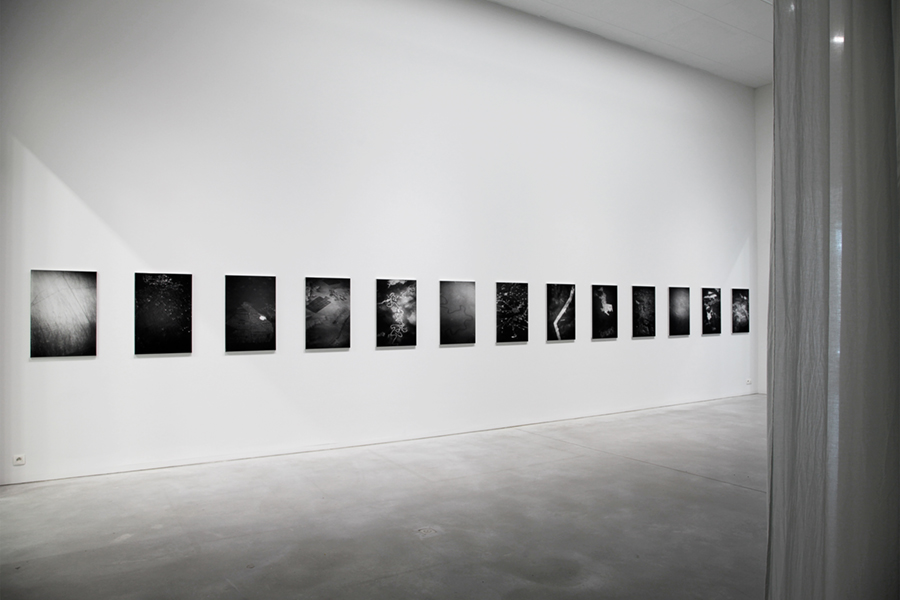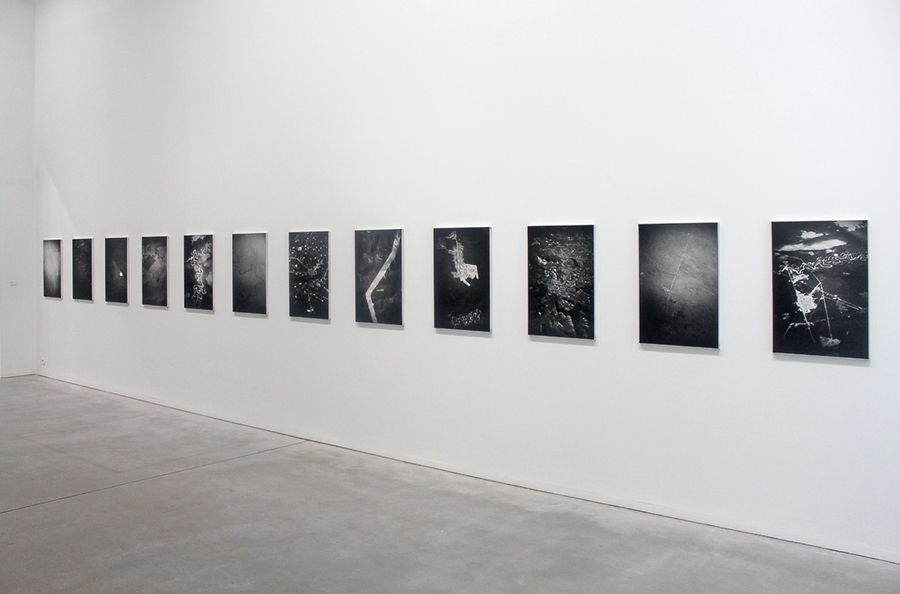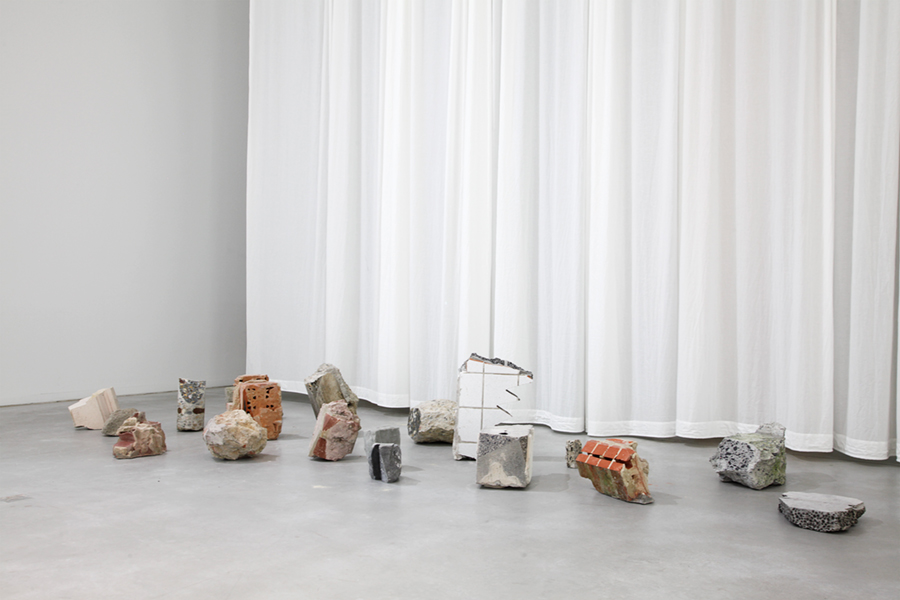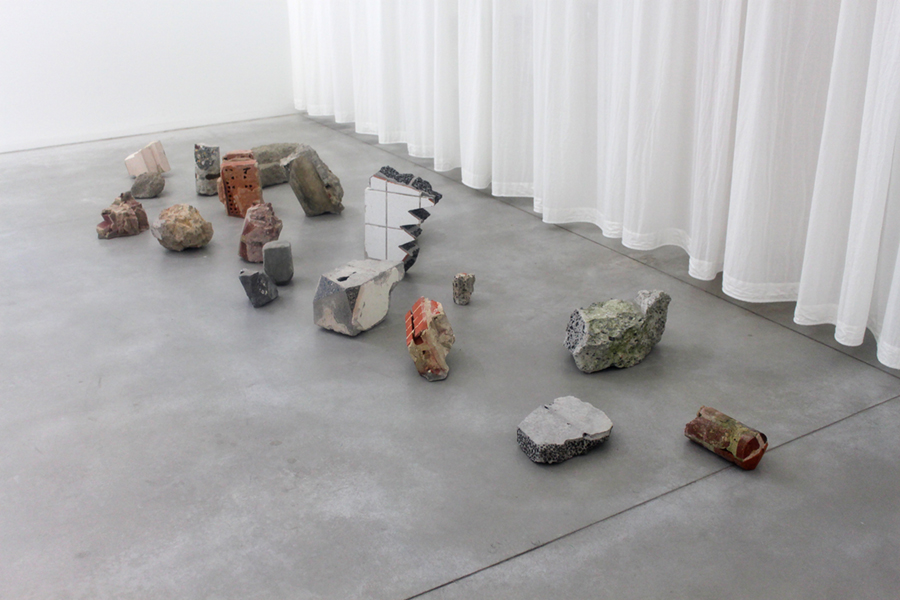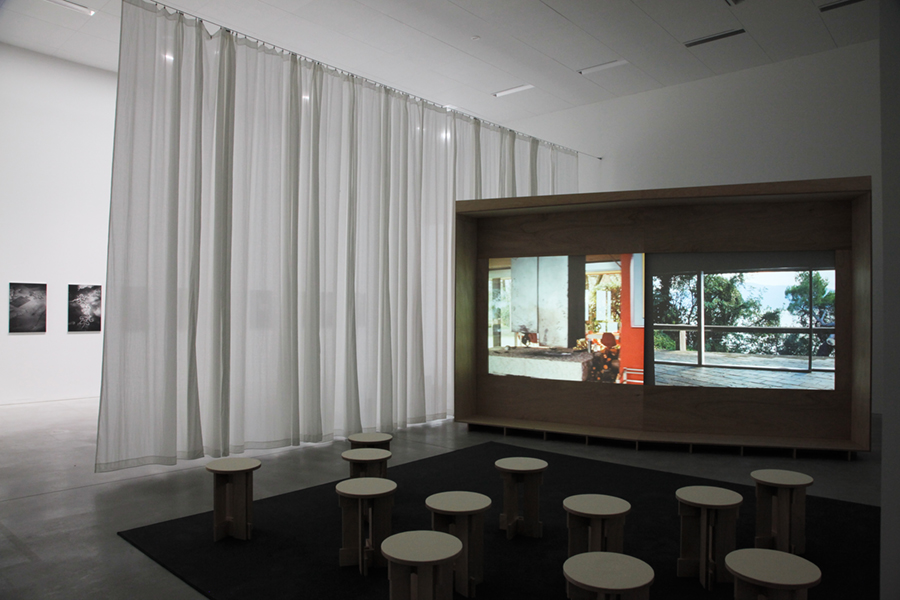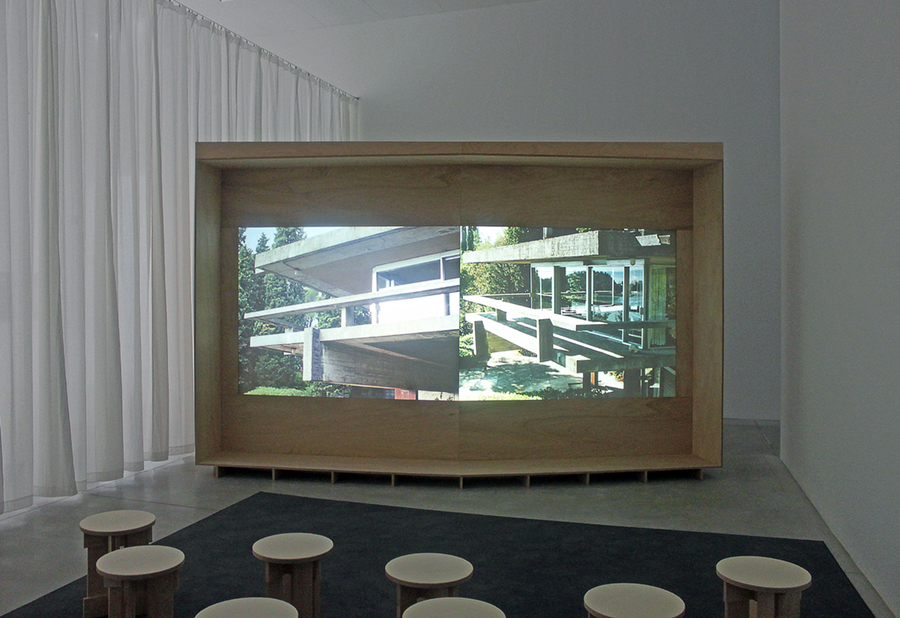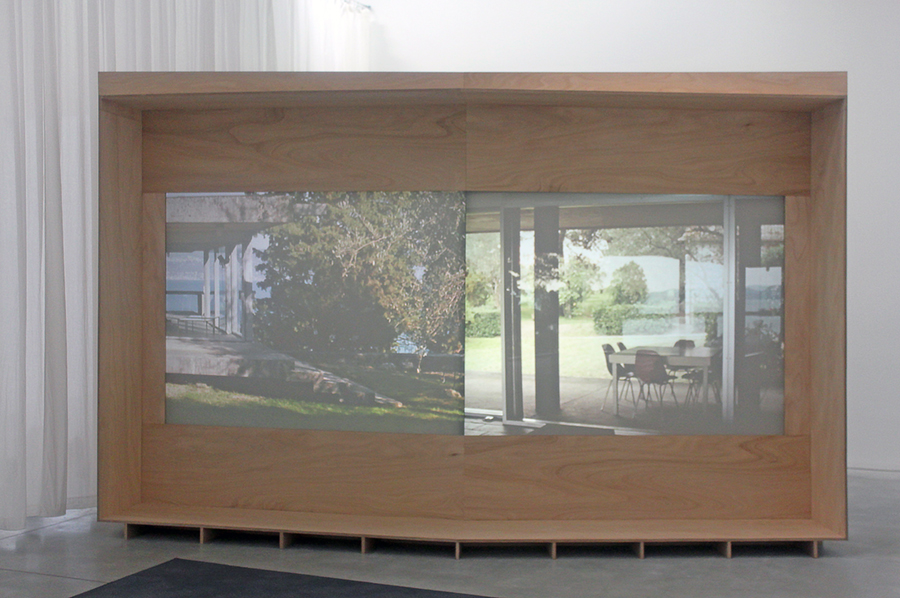Aglaia Konrad,
Boeing Over,
photographie NB, tirage sur papier baryté, 75 x 50 cm (framed) et tirage argentique sur papier baryté, 48 x 32 cm, marouflé sur aluminium, 2003-2007
« Boeing Over », une appellation aussi lapidaire que le sobre principe dont elles procèdent. Au fil de ses nombreux voyages, cette transhumance continuelle qui tisse son travail, Aglaia Konrad photographie la surface de la terre depuis le hublot du Boeing. Le studio est réduit, les moyens techniques développés des plus économes, l’objet photographié immense. Ce qui apparaît au travers du hublot déterminera ce que la photographie révélera ; c’est là le seul principe de cette série entamée en 1998.
Certes, la photographie aérienne permet d’enregistrer les entités anthropiques et naturelles en constante évolution à la surface de la terre. Elle montre des entités comme les montagnes, les canyons, les déserts ou les basses plaines, les cours d’eau, de la source à l’embouchure ; elle révèle les ressources terrestres comme les lacs ou les forêts ; elle permet de reconnaître les densités de population, l’amplitude des villes. Et pourtant, pour bonne part, les « Boeing Over » échappent à toute tentative d’objectiver ces observations. Elles ne sont que le résultat de l’espace qui fuit sous les ailes de l’avion au moment précis de la photographie. C’est dire que la réalité, j’allais écrire la vérité, des clichés d’Aglaia Konrad commence là où s’affirme l’indiscernable, où le réel s’abstrait. Déjà parce qu’on ne peut les localiser, parce que leur origine topographique, souvent, ne peut plus être déterminée, ces photographies opèrent sur notre oeil une fascinante attraction terrestre. Cette irrépressible attraction que nous avons à vouloir reconnaître et comprendre ce que nous observons, ici cette surface de la terre que l’on distingue à dix milles mètres. La distance entre ce que nous connaissons et ce que nous reconnaissons est peut bien plus considérable.
Plus d’info sur les Boeing Over
From the air, at heights where distinguishing things such as rivers, fields, mountains or seas becomes an almost haphazard process, in some mysterious way nature meets culture, along with the occasional cloud.
The unnoticed observer sees only what appears long-distance in the flight-height cabin window, which determines the view like a mechanized viewfinder.
For a photographer, this is one of the most automatic ways in which an image can be framed.
Boeing Overs continued to be produced until the Internet provided individuals with easy access to the observation of the earth via satellite.
Aglaia Konrad
Ruckbaukristalle, 2016
Rück-bau [building back], an obvious euphemism [a mild or less direct word substituted for one that is harsh or blunt when referring to something unpleasant or embarrassing] in German for demolition (Eng.) [tearing down], is brought into relation with the growth of crystals, Kristal/e, through the cutting of building or renovation debris into crystalline form and so, consequently, leaving open any questions concerning the material’ s original matrix, whether social or geological. … in which it is told that Cronus ate his four children in fear of their overthrowing him as he had his own father. ln vengeance, Cronus’ wife Rhea tricked him into swallowing a huge rock instead of his newborn son Zeus, whom she arranged to be taken to safety. On his return, Zeus killed Cronus by forcing him to vomit up the rock and, with it, his four siblings. Zeus then erected the rock as a monument, and it became the first recorded trace of architecture in the history of mythology and mankind. ln light of this myth about the birth of architecture, RÜCKBAUKRISTALLE [building-back-crystals] can be seen as a reversal-demolition’s puked-out debris giving birth to crystalline form in revenge for architectural violence.
Aglaia Konrad
La Scala, 2016
Transfert d’un film 16 mm à vidéo (couleurs), split-screen 4:3, 00:11:44
Caméra Léo Lefèvre
Camera assistant : Artur Castro Freire
Technical assistant : Daniel Mahlknecht
Sound recordist : Giulia Del Piero
Editor : Dana Munro, Aglaia Konrad
Colourist : Loup Brenta, Léo Lefèvre
Descending from the modernist architectural movement of the early 20th century, Brutalism is an international movement that flourished from the 1950s to the mid-1970s. Often related to governmental and social buildings such schools or high-rise housings, the typical brutalist architecture is rather a massive, fortress-like, construction with a predominance of exposed concrete construction.
In Italy, Vittorio Viganò (1919-1996) is probably the main exponent of brutal architecture. He undertook in 1956 a residential project for the sculptor and architect André Bloc (1896-1966) who is best known to be the founder of the magazine L’Architecture d’Aujourd’hui. Among the best architectures by Viganò, La scala is a rather small house on a spectacular headland overlooking Lake Garda. It consists of two horizontal concrete planes in which the rooms are shaped by glass separators and it is characterized by a long stairway that connects the house to the banks of the lake. In her new film, Aglaia Konrad combines in a split-screen different views of the villa and its surroundings. Her work should be considered as a form of visual research. Konrad establishes a dialectic between the house’s interior and the lake’s vista, but also between the brutalist style of the house and the enclosing nature. In this way, Konrad succeeds at the same time to document and to provide the viewers with a bodily perception of the Viganò’s oeuvre.
(…) Aglaia Konrad photographed Bloc’s Sculptures habitacles in 2008, and her forthcoming film La Scala, shot in autumn 2015, focuses on Bloc’s house (1956-1958) at Lake Garda, in San Felice, Italy. The house was not designed by Bloc, but by his review’s Italian correspondent, Vittoriano Viganà. It is known as Casa La Scala because of the impressively long staircase that connects the house to the waterfront. Following in the lineage of her previous films, which document the artist’s discovery of a singular building (a ho use, a church, … ), and which, even if only implicitly, speak of their absent inhabitants, this new film is, simultaneously, a documentary, an artist ‘s response to a building, and a portrait of a project arising from anintimate relationship, familial and/or professional. The relationship between architect and client is thrown into relief, echoed even, by the way the artist explores the building. She seems to insert herself, or her lens, into the space between the two.(…) (Penelope Curtis)
[sociallinkz]
